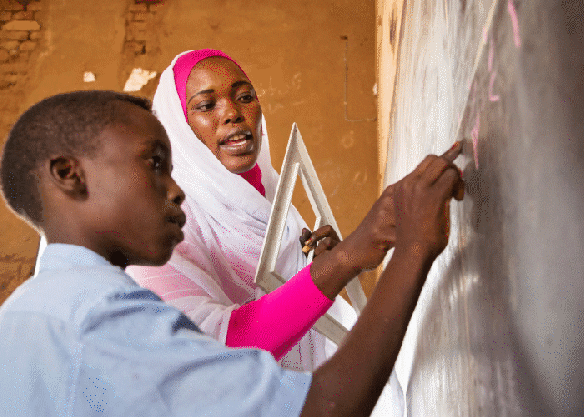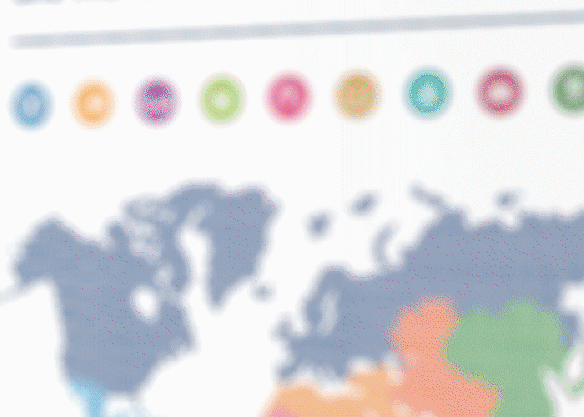By Silvia Montoya, Director, UNESCO Institute for Statistics
SDG 4 Data Digest 2019 explores the data methodologies needed to track progress and better direct policies and resources
It is not too late to reach the world’s education goal. At least, not yet. In 2015, United Nations Member States promised to reach Sustainable Development Goal 4 – a quality education for all – by 2030. We are now one-third of the way through the timeframe for its achievement, and it is still possible – just about – to meet the deadline. But without accurate, current and comparable data on education, and without a shift from ‘business as usual’ approaches to the provision and quality of education, the goal could soon be beyond our grasp.
Today, around 258 million children are out of school, according to data from the UNESCO Institute for Statistics (UIS). If we continue on our current trajectory, one in every six children aged 6 to 17 will still be out of school in 2030 and only six out of ten youth will complete secondary education.
Our data also show that being in school is not enough to guarantee a quality education. According to our estimates, 55% of children and adolescents of primary and lower secondary school age are not achieving minimum proficiency levels in reading and 60% are not reaching these levels in mathematics.
These global facts and figures are compelling enough to trigger urgent action. But there is so much more that we do not know, because we are still missing data that could prove crucial for the achievement of SDG 4. As the custodian of SDG 4 data, UIS continues to push for the disaggregated, deep-dive data that show us precisely what is happening and when as children make their way through their schooling, what works and – importantly – where education systems need to change track, target their resources and accelerate their efforts to deliver a quality education for all.
SDG 4 Data Digest: Tools help countries produce and use the indicators
The 2019 edition of the SDG 4 Data Digest reinforces the need for the robust data that are crucial to reach the global targets for education. It provides a panoramic view of the current development of SDG 4 global monitoring alongside proven methodologies for data collection and reporting at the international, regional and national levels. The new report, entitled How to Produce and Use the Global and Thematic Education Indicators, was launched today in Paris at an event during the UNESCO General Conference.

At the UIS, we are concerned that the collection, analysis and use of data are too often seen as ‘nice to have’, if and when resources allow. In reality, they help countries ensure that the money they spend on education has the best possible impact on individual and national well-being. A reluctance to prioritize data because of perceived resource constraints is a false economy that wastes both education investments and opportunities. To put it simply, education systems can only function effectively if their strategies, approaches and funding are built on a solid foundation of data.
Data show progress and gaps
The Digest aims to support countries as they strengthen this vital foundation, enabling them to produce the data required for international reporting, as well as for their own education priorities. We know that countries are under intense pressure to produce education data for a wide range of indicators: the 11 indicators used to monitor global progress towards SDG 4, plus the set of 32 thematic indicators to better support policy making. Together, these indicators should deliver a full picture of progress and potential setbacks. Yet many countries struggle to produce – let alone make good use of – the data that are required.
That is why the Digest offers proven solutions, showcasing practical methodologies that draw on existing information to produce accurate statistics, with no need to ‘reinvent the wheel’. It outlines steady progress on their development and use, thanks to the concerted efforts of governments, donors and technical partners worldwide. It also highlights UIS support for these efforts, and its work to build consensus on the indicators across countries through the Technical Cooperation Group (TCG) on the Indicators for SDG 4.
The first section of the Digest explains how countries can produce the national data needed to produce the 11 global monitoring indicators. This sets the stage to present the methodologies used to produce the 32 thematic indicators. The Digest goes on to outline the most effective regional initiatives to monitor progress towards SDG 4. It provides insight on how different regions are striving to make the best possible use of existing data while developing frameworks to support policymaking in areas they see as critical.
Bringing together countries and donors
One major barrier to the full implementation of SDG 4 monitoring has been the lack of financial support to build strong statistical capacity in low-income countries (read more about our campaign to #FundData). This is why the UIS is working to bring together countries and donors through the Global Coalition for Education Data, which will align financial and technical resources available at the country and international levels while coordinating public-private partnerships at reasonable costs. The aim is to reduce the duplication of efforts, strengthen statistical capacity building, ensure efficient investment of existing resources and improve the functioning and use of country-owned education information systems.
The investment case for education has been made repeatedly: its impact on poverty, on equity, on health and nutrition is well known. The challenge now is to ensure that no child is being left behind – and that means ensuring that every child counts and is counted.
Watch this space for a series of blogs that will look more closely at the proven methodologies for education data outlined in the 2019 SDG 4 Data Digest, currently available in English (French and Spanish editions forthcoming)
Get the education data you need in the format you want!
As the custodian agency for SDG 4 indicators, the UIS offers a range of data products to meet the needs of users. Key products include:
- UIS Global Education Database covers all levels of education for more than 200 countries and territories.
- SDG 4 Data Tables can be easily downloaded in different formats.
- SDG 4 Data Explorer displays data by country, region or year; by data source; and by sex, location and wealth. Users can explore measures of equity that are crucial for the achievement of SDG 4.
- SDG 4 Country Profiles present the latest results for countries in easy-to-understand charts and graphs.
- eAtlas for Education 2030features interactive maps and charts of the global and thematic indicators.
